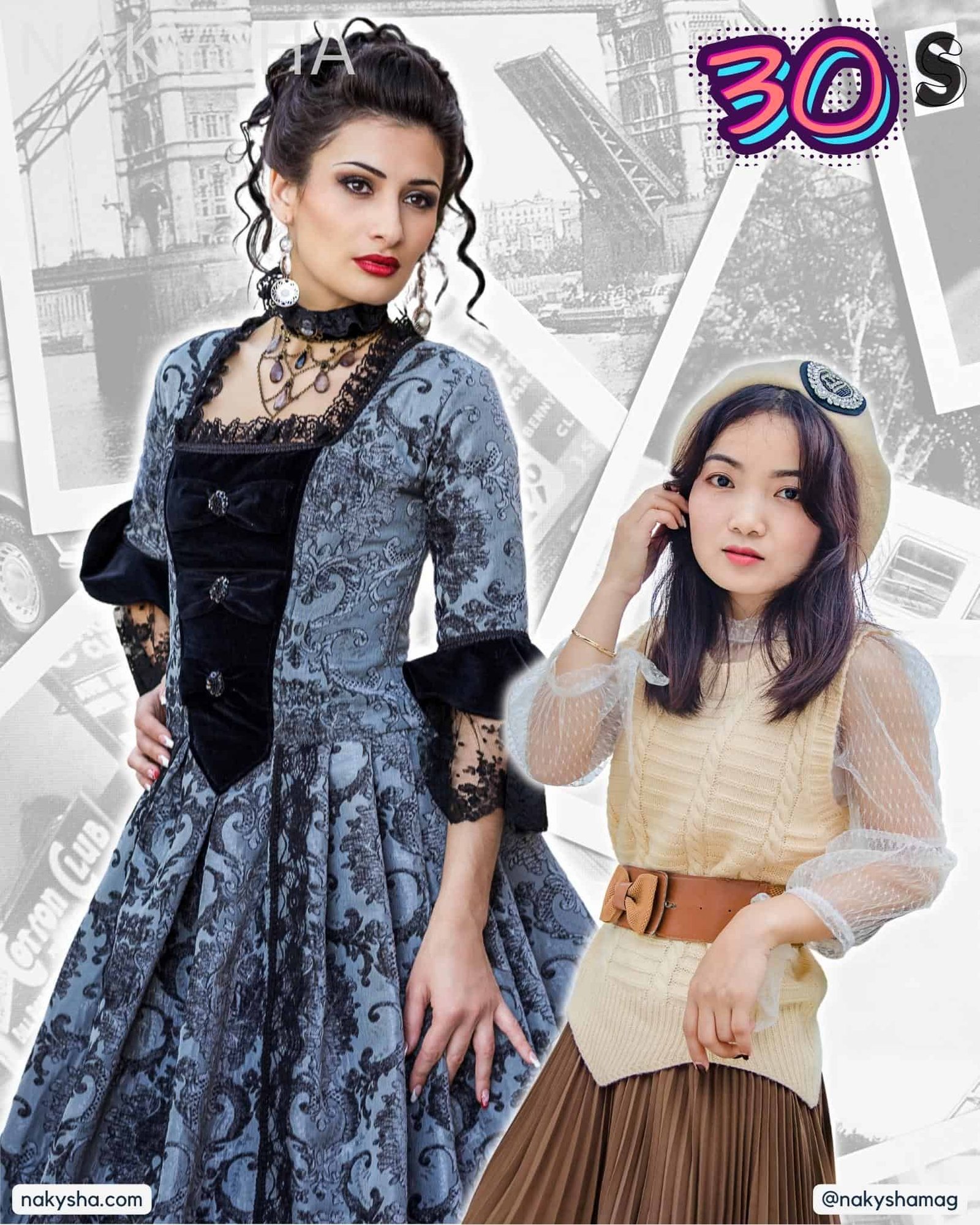I’ve fallen in love with the 1930s style for many reasons. Its timeless elegance, attention to detail, and versatility make it a popular choice for those who appreciate vintage fashion and its enduring appeal.
The 1930s was a decade of dynamic changes, especially in fashion. As the era ended, the 1930s saw some of the most iconic fashion trends ever created. From bold prints and bright colors to structured silhouettes and feminine details, the styles of this decade are still influencing fashion today.
In this article, we will discuss everything you need to know about 1930s fashion styles so that you can capture the glamour and sophistication of this period. Moreover, we will also discuss how different events influenced the fashion trends of this era.
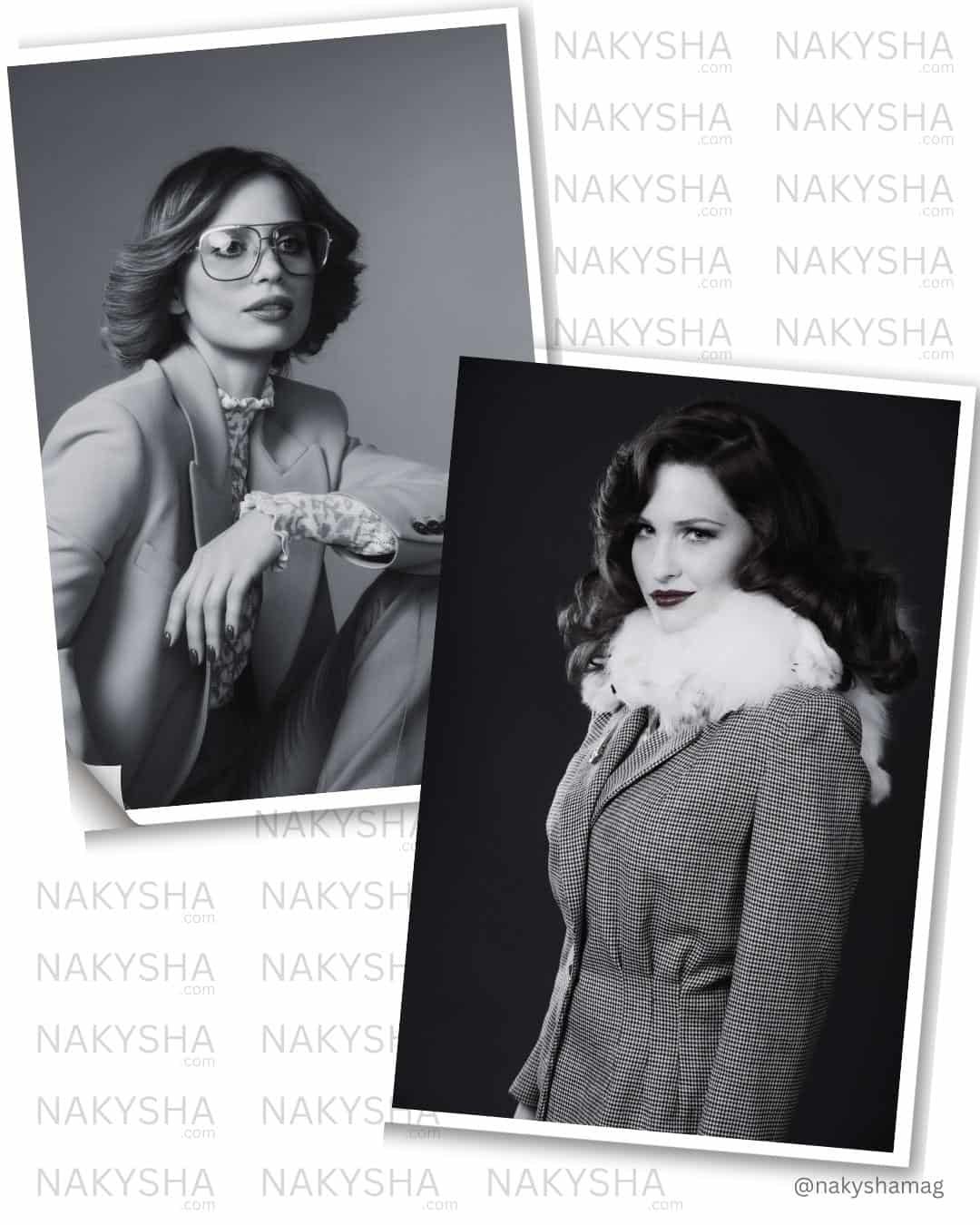
Overview of 30s Fashion Trends
The 1930s marked a period of economic depression and political turmoil, which had a significant impact on fashion trends of the time. Fashion became more restrained and conservative, reflecting the austerity of the times.
Women’s clothing became more practical and functional, focusing on elegant designs. Skirts became longer, falling below the knee, and waistlines became more defined, often with belts. Sleeves were also extended, and shoulder pads were added to create a more structured silhouette.
Fabrics such as silk, satin, and velvet remained popular but were used in more muted colors such as navy, black, and brown. The Hollywood film industry significantly influenced fashion during this time, with glamorous movie stars such as Jean Harlow and Greta Garbo setting trends for the masses.
The Art Deco movement also impacted fashion, with geometric shapes and bold patterns featuring prominently in clothing and accessories. Overall, the style of the 1930s was characterized by simplicity, elegance, and practicality, reflecting the societal changes and challenges of the time.
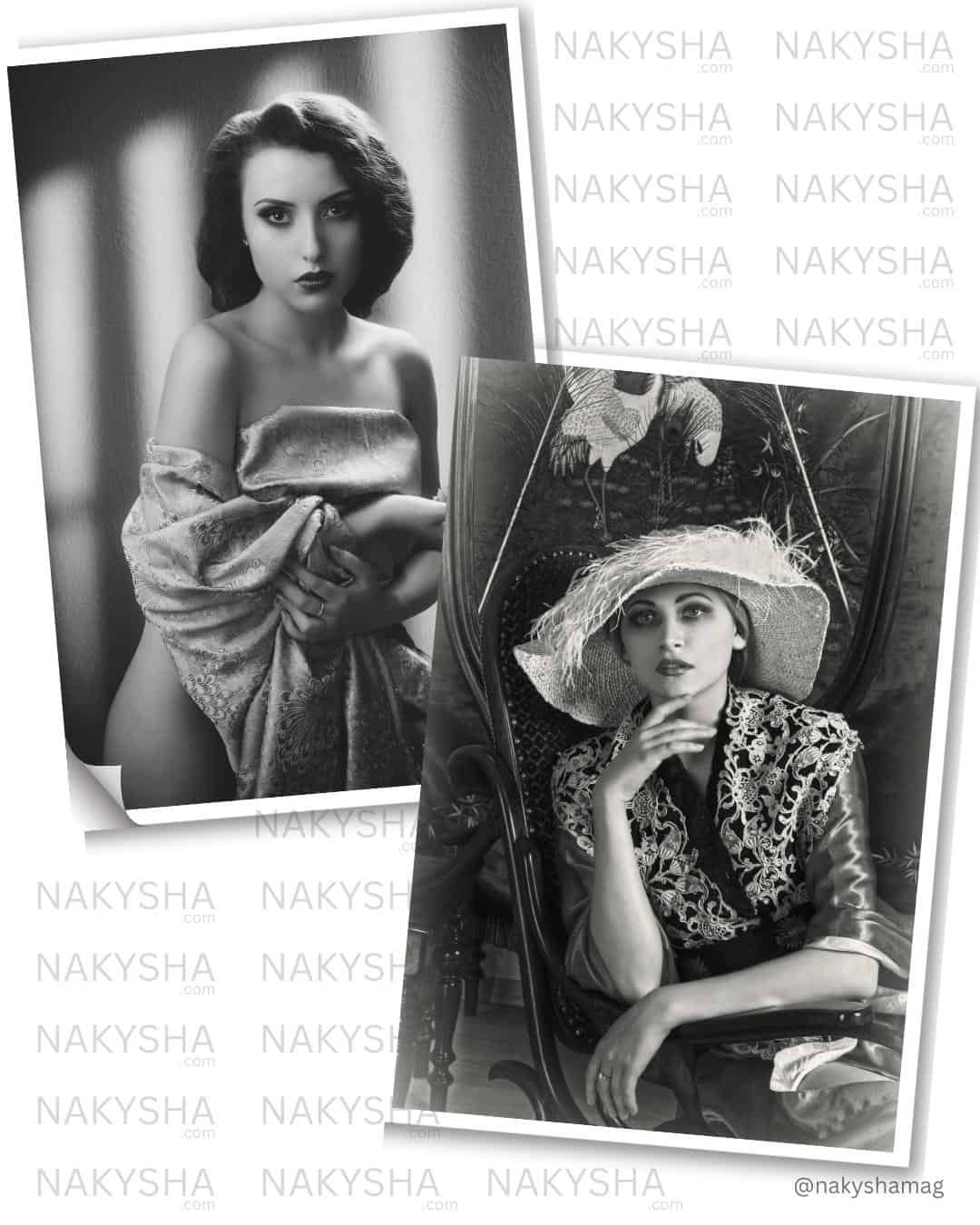
What are the Popular Types of 30s Fashion Styles?
The 1930s saw the emergence of several popular fashion styles, each with its unique characteristics. Some of the most notable types of 30s fashion styles include:
Hollywood glamour: Inspired by the glamorous movie stars of the time, this style was characterized by form-fitting dresses, often with a bias cut that clung to the body, and luxurious fabrics such as silk and satin.
Art Deco: The Art Deco movement influenced fashion in the 1930s with bold geometric patterns and shapes in clothing, accessories, and architecture.
Sportswear: The popularity of sports and outdoor activities led to the development of sportswear, designed for comfort and ease of movement. This included trousers, shorts, and knitted sweaters.
Military-inspired: With the outbreak of World War II on the horizon, military-inspired clothing became popular, with khaki-colored trousers, utility jackets, and bomber-style jackets featuring prominently.
Daywear: Daywear in the 1930s was practical and functional, with longer skirts and tailored jackets becoming popular. Dress styles were often simple and unadorned, focusing on clean lines and minimal embellishments.
The fashion of the 1930s was influenced by the economic and political realities of the time, as well as changing social norms and cultural movements. The resulting fashion styles were practical, elegant, and often reflective of the challenges and aspirations of the era.
The Key Features of 30s Women’s Fashion?
The 1930s saw significant changes in women’s fashion as clothing became more practical and functional. Some key features of 30s women’s fashion include:
Longer hemlines: Skirt hemlines fell to mid-calf or just below the knee, which was longer than the hemlines of the previous decade.
Defined waistlines: Women’s clothing emphasized a defined waistline, often achieved with a belt or a cinched waist.
Shoulder pads: Clothing in the 1930s often featured shoulder pads, which gave the appearance of a more structured silhouette.
Elegant fabrics: Fabrics such as silk, satin, velvet, and rayon were popular and were often used in muted colors like navy, black, and brown.
Minimal embellishments: Clothing in the 1930s was generally simple and unadorned, with minimal embellishments like embroidery or beading.
Suits: Tailored suits were popular for day and evening wear, with jackets featuring a defined waistline and slightly padded shoulders.
Accessories: Women’s fashion in the 1930s were often accessorized with hats, gloves, and jewelry, with long, dangling earrings being particularly fashionable.
The 30s women’s fashion was characterized by practicality and elegance, emphasizing defined waistlines, simple silhouettes, and luxurious fabrics.
The era’s clothing reflected the societal changes of the time, including the economic struggles of the Great Depression and the looming threat of World War II.
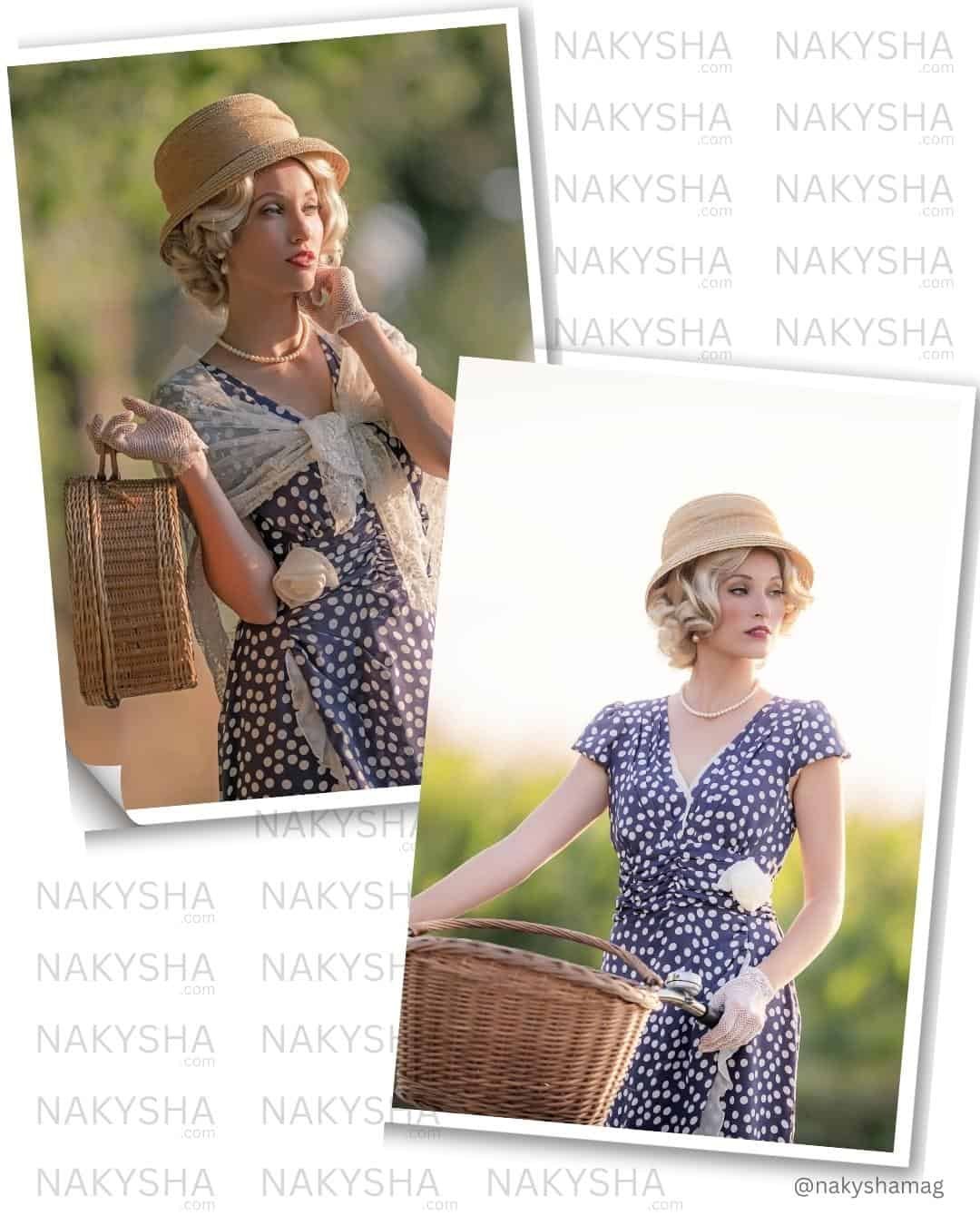
The Inspirations of Fashion Trends in the 30s
Fashion trends in the 1930s were influenced by a variety of factors, including:
The Great Depression: The economic struggles of the Great Depression significantly impacted fashion trends, as people were forced to prioritize practicality and affordability.
Hollywood: The glamorous movie stars of the time, including Greta Garbo and Joan Crawford, had a significant influence on fashion trends, with their stylish and sophisticated wardrobes inspiring women nationwide.
Art Deco: The Art Deco movement, with its bold geometric shapes and designs, influenced fashion trends in the 1930s, with many clothing and accessory designs featuring Art Deco-inspired patterns.
Sports and outdoor activities: The popularity of sports and outdoor activities, such as skiing and tennis, influenced the development of sportswear, emphasizing comfort, functionality, and ease of movement.
Aviation and military: Advances in aviation and the looming threat of war influenced fashion trends, with aviator-style jackets and military-inspired clothing becoming popular.
Modernism: The Modernist movement, which emphasized simplicity and functionalism, also impacted fashion trends, with many designers opting for clean lines and minimal embellishments.
Famous Fashion Designers in the 30s
The 1930s saw the rise of several famous fashion designers whose work had a significant impact on fashion trends of the time. Some of the most notable fashion designers of the 1930s include:
Coco Chanel: The legendary designer Coco Chanel continued to be a significant force in the fashion world in the 1930s, with her elegant, straightforward designs inspiring women across the globe.
Elsa Schiaparelli: Italian-born designer Elsa Schiaparelli was known for her daring and whimsical designs, often featuring bold colors and unusual fabrics.
Jeanne Lanvin: French designer Jeanne Lanvin was renowned for her intricate, feminine designs, which featured delicate fabrics and subtle embellishments.
Madame Grès: French designer Madame Grès, also known as Alix Barton, was famous for her elegant, draping designs, which emphasized the natural flow of the fabric.
Mainbocher: American-born designer Mainbocher was known for his elegant, understated designs, which were popular with the fashionable elite of the time.
These famous fashion designers of the 1930s helped shape the decade’s fashion trends with their innovative designs and unique perspectives, inspiring women worldwide to embrace new styles and trends.
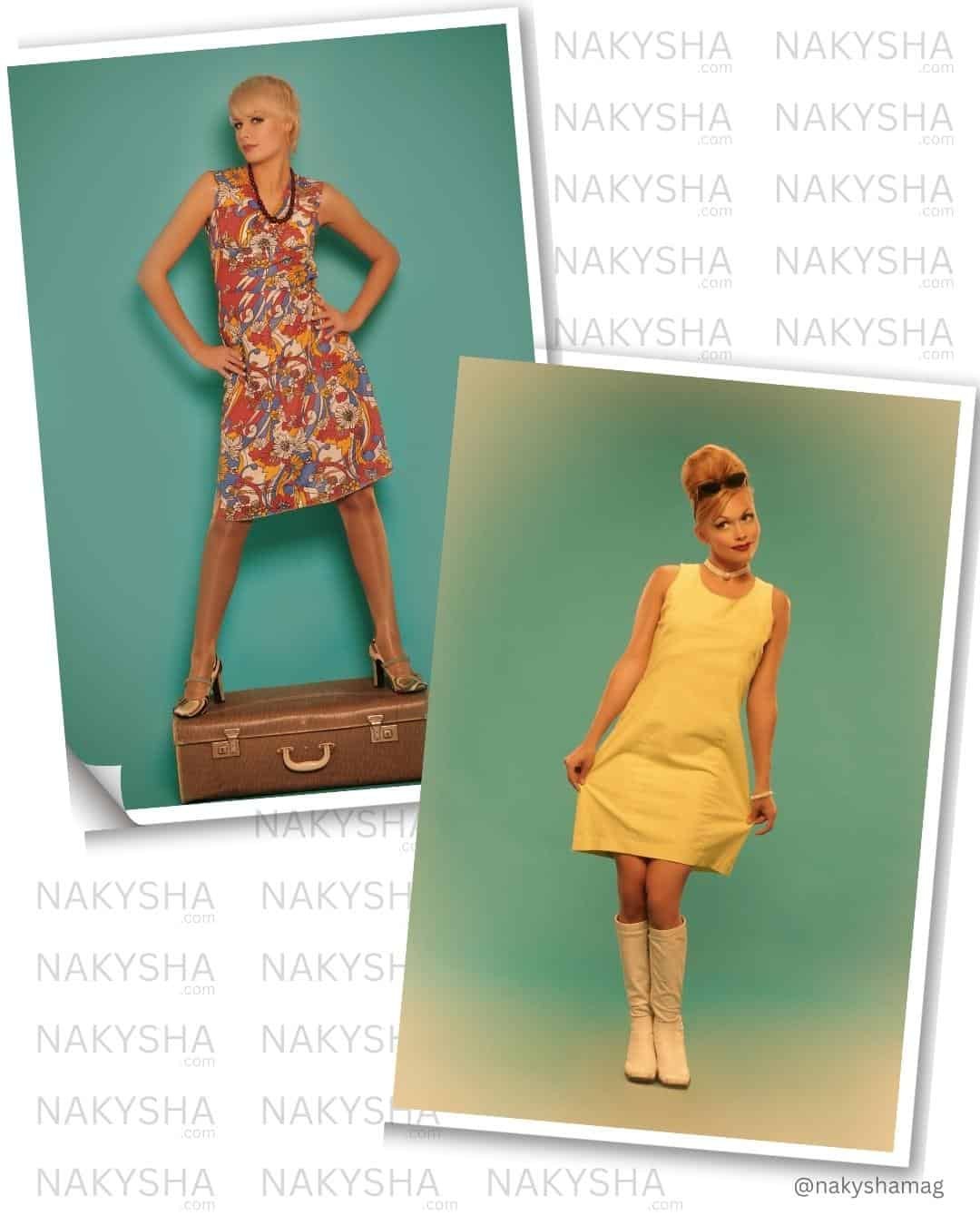
How to Incorporate 30s Style into Modern Fashion?
The 1930s were a time of elegance and sophistication in fashion, characterized by slim-fitting clothing, high waistlines, and glamorous accessories. If you want to incorporate 30s style into modern fashion, here are some tips to keep in mind:
Look for classic 30s silhouettes: Look for slim-fitting dresses, tailored suits, and high-waisted pants that were popular in the 30s. You can also add 30s-inspired details like pleats, ruffles, and buttons.
Use luxurious fabrics: The 30s were all about luxury and glamour, so try incorporating luxurious fabrics like silk, satin, and velvet into your wardrobe. These fabrics can add a touch of elegance and sophistication to any outfit.
Play with accessories: Accessorizing is a vital part of 30s fashion, so try adding a pair of gloves, a fur stole, or a statement hat to your outfit. These accessories can help you capture the glamour of the 30s while still looking modern.
Mix and match: Don’t be afraid to mix 30s-inspired pieces with modern clothing. For example, pair a vintage-inspired blouse with a trendy pencil skirt or wear a stylish blazer with high-waisted 30s-style pants.
Keep it simple: 30s fashion was all about understated elegance, so try to keep your outfits simple and streamlined. Avoid overly flashy or busy patterns, and stick to classic black, white, and navy colors.
By incorporating these tips into your wardrobe, you can capture the timeless elegance of 30s fashion while still looking modern and stylish.
Tips for Blending 30s Fashion Elements into Modern Outfits
If you want to blend 30s fashion elements into your modern outfits, here are some tips to consider:
Start with a statement piece: Incorporating a statement piece inspired by 30s fashion is a great way to add a touch of vintage style to your modern outfits. Look for details like a silk blouse with a high neckline, a midi-length skirt with pleats, or a pair of high-waisted pants.
Please choose a modern silhouette: When blending 30s fashion elements with current fashion, it’s essential to select contemporary silhouettes to balance the vintage-inspired pieces. For example, you can pair a high-waisted skirt with a crop top or a vintage-inspired blouse with a modern pencil skirt.
Stick to a color palette: Sticking to a limited color palette can help create a cohesive look when blending different fashion elements. For example, you can stick to neutral colors like black, white, and gray or choose a color scheme like navy, cream, burgundy, and gold.
Experiment with accessories: Accessories are a great way to add vintage-inspired details to your modern outfits. Consider adding a statement hat, a pair of gloves, or a vintage-inspired purse to complete your look.
Mix textures: Mixing different textures can add dimension and interest to your outfits. Consider pairing a silk blouse with a tweed skirt or a velvet blazer with high-waisted trousers.
By blending 30s fashion elements into your modern outfits, you can create a unique and stylish look that reflects your taste and style. Remember to have fun experimenting with different pieces and textures until you find a watch that you love!
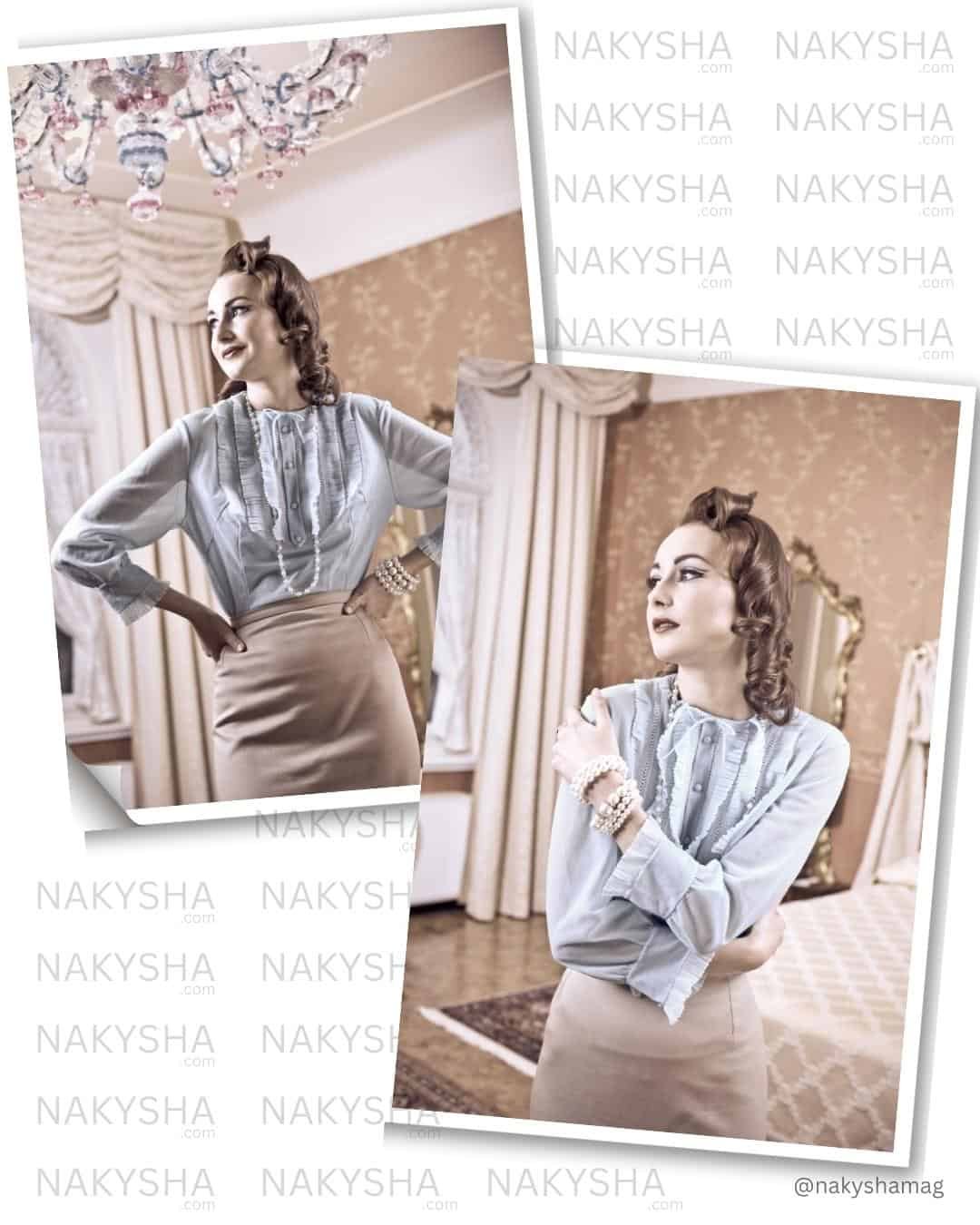
Hair Styles in 30s Fashion
The 1930s were a time of elegance and sophistication in fashion, and hairstyles of that era reflected these values. Here are some of the most common hairstyles in the 30s style:
The Marcel Wave: The Marcel Wave was a popular hairstyle in the 1930s, characterized by soft waves that framed the face. This style was achieved using a heated curling iron and required regular maintenance to keep the waves looking fresh.
The Finger Wave: The Finger Wave was a similar style to the Marcel Wave but was achieved without heat styling. Instead, the hair was molded into finger-like waves using a comb and styling products like pomade or gel.
The Bob: The bob was a popular hairstyle in the 1930s, characterized by a chin-length cut with blunt ends. This style could be worn straight or with soft waves and was often paired with bangs.
The Updo: Updos were also popular in the 1930s, and styles ranged from sleek and simple to elaborate and intricate. Updos were often adorned with hair accessories like ribbons, flowers, or jeweled clips.
The Victory Roll: The Victory Roll was a popular hairstyle during World War II, but it first emerged in the late 1930s. This style featured a roll of hair at the front of the head, often paired with curls or waves at the back.
Overall, 30s hairstyles were elegant and feminine, often requiring regular upkeep to maintain their shape and style.
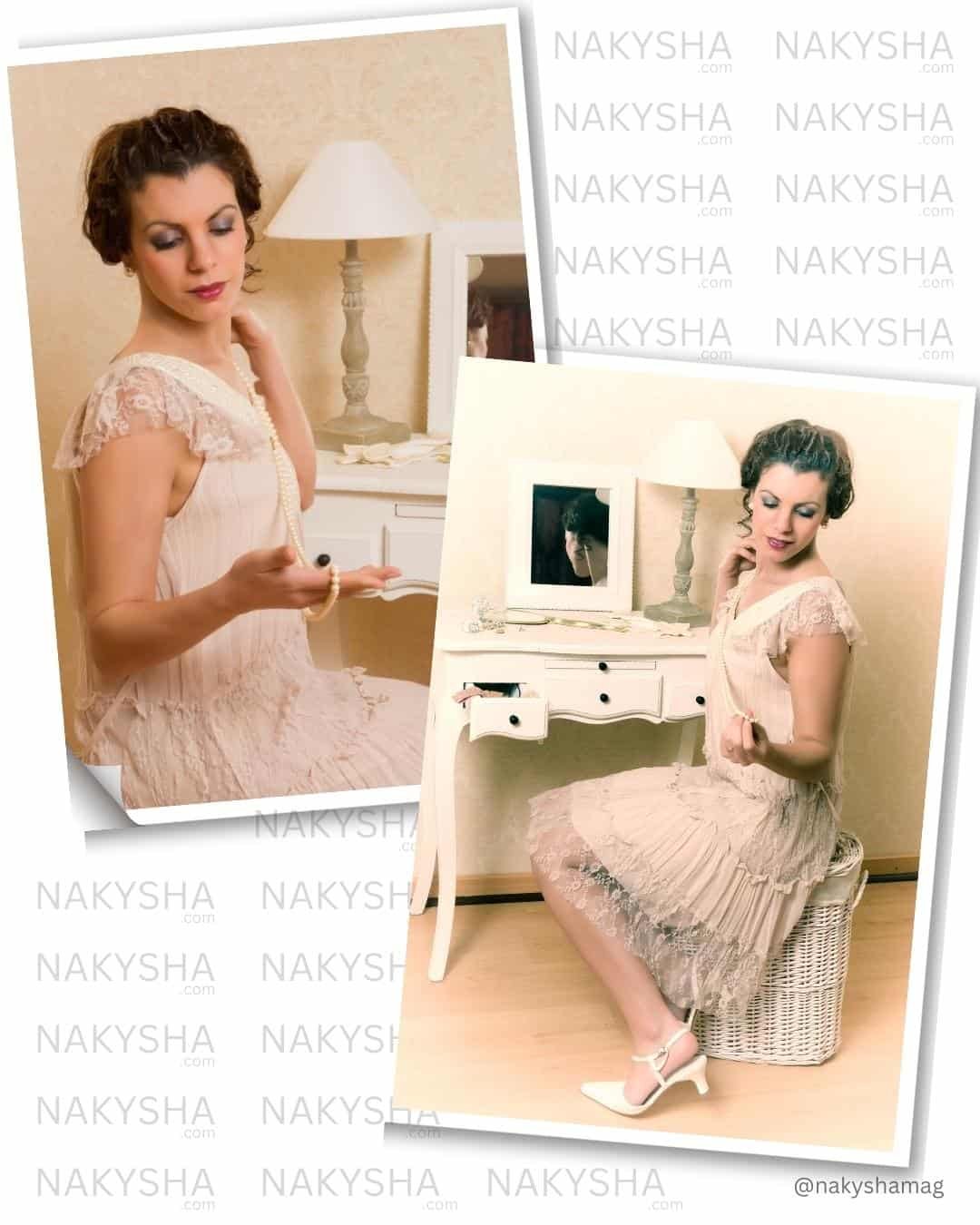
Makeups for 30s Style
Makeup during the 1930s was all about sophistication and glamour. Here are some of the most common makeup styles for 30s fashion:
Bold Lips: Bold, vibrant lips were a hallmark of 1930s makeup. Shades of red and burgundy were popular, and lips were often accentuated with a subtle lip liner to create a defined look.
Arched Brows: Arched eyebrows were also famous during the 1930s. Brows were often plucked thin and then filled in with a pencil or powder to create an arch that framed the eyes.
Winged Eyeliner: Winged eyeliner was a classic look in the 1930s. Eyeliner was applied along the upper lash line and extended outwards, creating a winged effect. This style emphasized the shape of the eyes and was often paired with bold lips.
Natural-looking Skin: Unlike the bold makeup of the lips and eyes, skin during the 1930s was often left looking natural and radiant. A light dusting of powder was used to set the makeup, but the heavy foundation was generally avoided.
Blush: Blush was used to add a touch of color to the cheeks and create a healthy, youthful glow. Soft, muted shades like pink and peach were popular, and blush was applied to the apples of the cheeks and blended outwards.
Overall, 30s makeup was all about creating a polished, sophisticated look. Bold lips and winged eyeliner were paired with natural-looking skin and a touch of blush to create a glamorous and refined look.
Accessorizing for 30s Style
The 1930s were a time of glamour and elegance, and accessories were essential to fashion. Here are some of the most common ways to accessorize for the 30s style:
Jewelry: Jewelry was an essential accessory in 30s fashion. Women often wore long, dangling earrings, necklaces with large pendants or beads, and bracelets or bangles that made a statement. Jewelry was usually made from precious metals and stones and was designed to be eye-catching and glamorous.
Gloves: Gloves were an essential accessory during the 1930s, worn both during the day and for formal occasions. Gloves were made from leather or silk and often adorned with buttons or bows. They were worn in various colors and lengths, from wrist-length to elbow-length.
Hats: Hats were a popular accessory during the 1930s and were worn by women of all ages. The most popular styles included cloche hats, which fit closely to the head, and wide-brimmed hats, which offered sun protection and added a touch of glamour.
Scarves: Scarves were versatile accessories that could be worn in various ways. They were often made from silk or satin and worn around the neck, tied in the hair, or used to access a handbag.
Handbags: Handbags were an essential accessory in 30s fashion. The most popular styles were small and structured, often made from leather or other fine materials. They were often adorned with clasps or further decorative details and were designed to complement the outfit’s overall look.
Accessories were an essential part of 30s fashion, and they were used to add a touch of glamour and sophistication to every outfit. Jewelry, gloves, hats, scarves, and handbags were all essential elements of the 1930s wardrobe, and they remain popular today among those who appreciate Vintage fashion.

